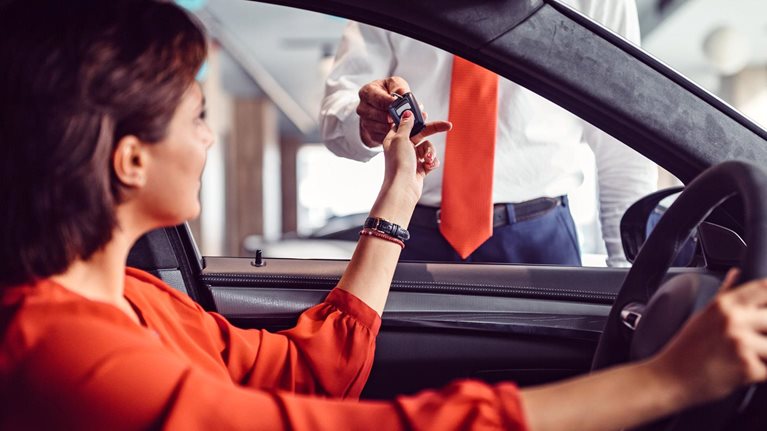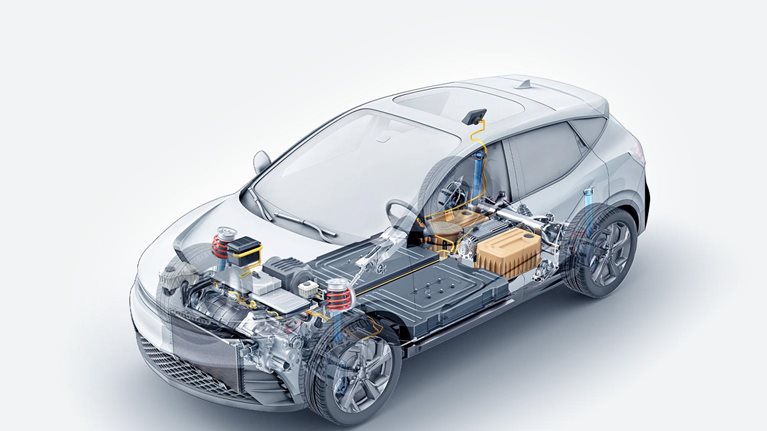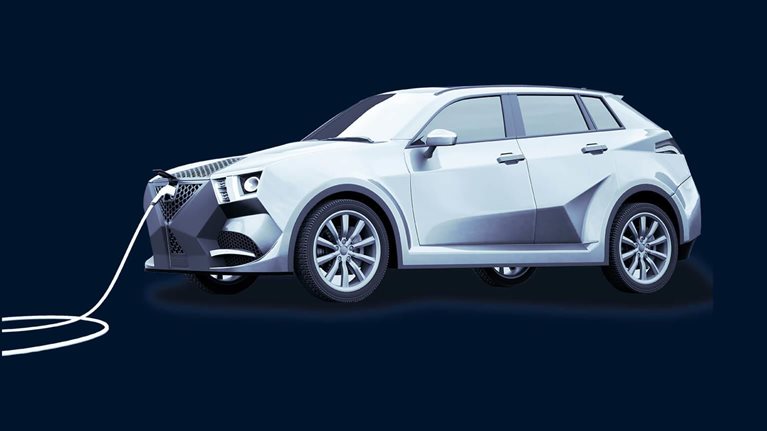India is poised to embrace a future of electric vehicles (EVs): 70 percent of tier-one Indian car consumers state that they’re willing to consider an electric car for their next vehicle, as compared to the record-high global average of 52 percent. Even though the Indian internal-combustion engine (ICE) vehicle market has seen an increase in recent years,1 the rapid transition to electrification signifies a decisive inflection point for the country. Driven by a shift in global climate policies, central and state governments have introduced initiatives such as the Faster Adoption and Manufacturing of Electric Vehicles (FAME) scheme to speed up the adoption of EVs. In addition, several cities have introduced access regulations for ICE vehicles to reduce air pollution and improve traffic conditions.
At the same time, EVs have become increasingly accessible. Incumbent car manufacturers have announced ambitious product-portfolio electrification targets. Newcomers have launched models specifically designed for India’s urban environments. And the total cost of ownership for EVs, which is historically an obstacle for EV purchasers, achieved parity with ICE vehicles. As a result, EV market penetration is projected to grow to 10 to 15 percent by 2030,2 creating a significant opportunity for OEMs, financial institutions, grid operators, and other stakeholders.
To better understand consumer sentiment about vehicle electrification in India, we surveyed people across income levels and spanning regions in India (see sidebar, “Methodology”). Their responses reveal both an appetite for and concerns regarding electric vehicles, including the importance of sustainability, charging infrastructure, and the evolving purchase journey in the online space.
Consumers are largely on board with EVs because sustainability is increasingly important
Consumer sentiment suggests the transition to electric cars will gain momentum. The vast majority of people are eyeing EVs for their next car purchase, with a clear preference for full battery electric vehicles (49 percent) over plug-in hybrid electric vehicles (21 percent) (Exhibit 1). These preferences align closely with our research on electric two-wheelers, which showed that 86 percent of consumers would consider buying an EV compared to 69 percent who would consider an ICE vehicle. A number of factors are contributing to this appetite for EVs, with potential purchasers noting the impact on the environment (67 percent), lower total cost of ownership (26 percent), and reduced engine noise (26 percent) as the biggest benefits of driving an EV.

Indeed, an overall concern for sustainability is influencing Indian consumers’ desire for EVs, with sustainability being the number one priority in car-buying and mobility-usage habits. In fact, sustainability is increasingly influencing consumer decisions across the board in India: 75 percent of Indians are starting to change (or have already changed) their behavior and consumption patterns based on sustainability considerations. Of these changes, engaging with and becoming more loyal to sustainable brands (27 percent), positively advocating for sustainable products and services (23 percent), and trying sustainable products and services more often (20 percent) are the most common.
Sustainability is among the top five criteria people factor in when considering a car, along with safety, brand, and costs (Exhibit 2). The desire for zero-carbon vehicles is also evident in the dominant two-wheeler market, in which this preference was one of the top three purchase criteria.

Convenient charging points and long-term test-drives will accelerate adoption
Alongside all this momentum for sustainable mobility, there emerge real concerns that could influence uptake, including battery life and safety, purchase price, charging time, and reliability of technology. Better availability of charging points is one of the biggest factors influencing the shift toward electric mobility. Perceived charging infrastructure readiness is low: more than 75 percent of all surveyed consumers feel that India is not yet well set up in terms of charge points (Exhibit 3).

Indian consumers show almost equal affinity for public and home charging (58 percent and 42 percent, respectively) despite appreciating the latter as being cheaper, more convenient, and more accessible. However, only 55 percent of consumers have access to home charging, while another 30 percent would be able to upgrade their home setup accordingly. But even though Indian consumers have limited access to home charging, this will likely not hinder EV adoption. Two-thirds of Indian consumers would buy an EV even if they could not charge at home. But similar to what we found in our research on electric two-wheelers, 38 percent of consumers feel their nearby areas lack a sufficient network of charging infrastructure. Hence, investing in both public and home charging is critical for further EV adoption. The biggest factors influencing where people choose to charge in public are charging speed (49 percent) and costs (41 percent), followed by the safety of the location (28 percent). In fact, most people are willing to pay 10 to 20 percent more for the convenience of fast charging.
Another significant factor influencing potential EV purchasers was the test drive experience. Of the people who are currently skeptical about purchasing an EV, 24 percent said the test drive experience presents an important tipping point in the overall purchase journey. Thus, OEMs can consider implementing long-term test rides (over the course of seven to ten days) with the convenience of at-home services to eliminate customer anxiety while adopting new products and technology.
Other major factors that could lead to higher EV adoption are vehicle safety improvements and providing better servicing infrastructure. Furthermore, an increase in fuel prices and a better understanding of the total cost of ownership of EVs might nudge more customers toward EVs.
The transition to electric cars will change the purchase journey
As the transition to EVs unfolds, the landscape for buying and selling cars is changing dramatically. Indian consumers are open to buying cars online and want to interact with brands through a simplified, digital process that provides more flexibility and convenience. The majority of Indian customers are ready to perform most of their car purchase journey digitally. More than 70 percent of consumers are starting their journey online, and about 40 percent of consumers are willing to make purchases online. However, about 90 percent of the same consumers need a physical touchpoint with an OEM or dealer. This applies to highly individual exchanges such as test-drives, services, answering questions about the vehicle, or negotiating best deals.
Across each major touchpoint of the purchasing journey, people who prefer to engage via websites and apps show a strong preference for engaging with OEMs rather than a dealer or third party (Exhibit 4). This indicates an emergence of hybrid direct-to-consumer models, with car dealers continuing to play a pivotal (but evolved) role in the overall purchase and post-purchase journey.

Flexible ownership options are also becoming more popular with Indian consumers. While most consumers (about 79 percent) still prefer an outright purchase for their next car, they are gradually opting for more-flexible ownership options such as car leasing, subscriptions, or pay-per-use models.
Shifting ownership preferences, stemming from a desire to access higher-value assets and have more flexibility and convenience, are opening new market opportunities for flexible ownership options, such as leasing. Our global survey revealed that consumers in other geographies are willing to switch brands for flexible vehicle purchase, indicating that the time is ripe for market players to adapt.
Consumer appetite for EVs has implications for mobility stakeholders
These trends raise important considerations for different stakeholders in the mobility ecosystem as they work to meet consumers where they are in their journey toward EVs.
In many cases, electric cars could become an important pocket of growth for car manufacturers. The contribution of electric cars to overall revenues may become more significant in the future as consumer pull accelerates and governmental measures become even more favorable. With a fast-growing market open to innovations in car purchasing (for example, via online channels) and usage (for example, fully leased), electric cars may provide an entry opportunity for new players. At the same time, car dealers may need to adjust their sales and service offerings to accommodate the growing demand for electric cars, including expanding their technical knowledge and digital capabilities to deliver omnichannel experiences. Supplier stakeholders such as grid operators will most likely experience an increased demand for electricity and may need to upgrade and expand the existing infrastructure and integrate new technologies to optimize the use of the electrical grid. And cities will be crucial players in shaping the EV transition, providing the infrastructural conditions for charging needs and implementing effective policy measures.
Indeed, the shift to electric cars in India has implications far beyond only OEMs and could be an integral part of progress toward a more sustainable India.


